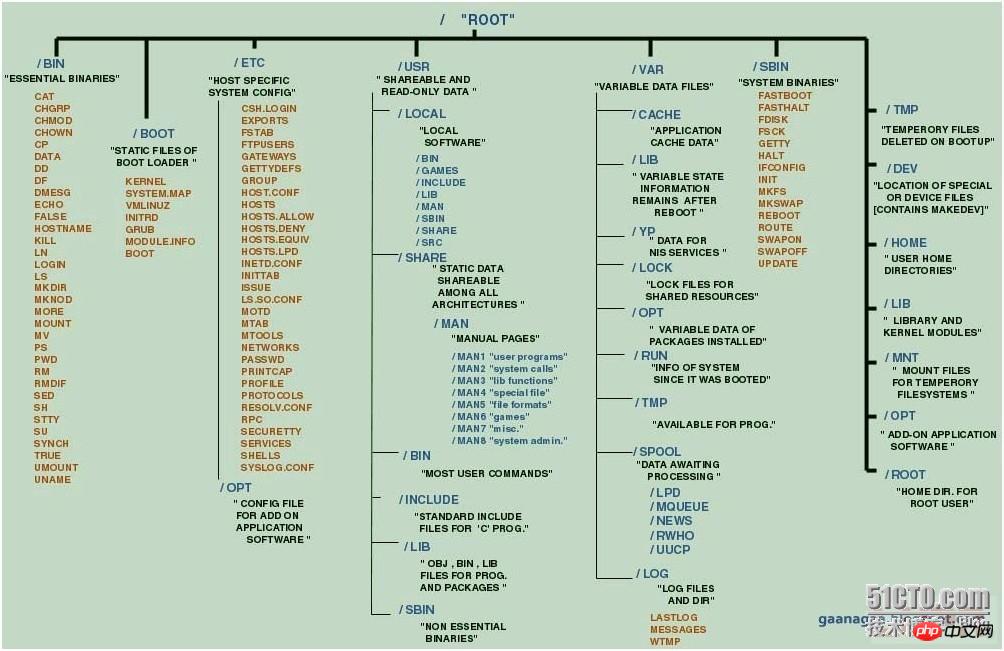下面先來一個實(shí)例。我們通過創(chuàng)建兩個線程來實(shí)現(xiàn)對一個數(shù)的遞加。或許這個實(shí)例沒有實(shí)際運(yùn)用的價值,但是稍微改動一下,我們就可以用到其他地方去拉。
代碼:
/*thread_example.c?:?c?multiple?thread?programming?in?linux ?*author?:?falcon ?*e-mail?:?tunzhj03@st.lzu.edu.cn ?*/ #include?<pthread.h> #include?<stdio.h> #include?<sys> #include?<string.h> #define?max?10 pthread_t?thread[2]; pthread_mutex_t?mut; int?number=0,?i; void?*thread1() { ????printf?("thread1?:?i'm?thread?1/n"); ????for?(i?=?0;?i?<p>下面我們先來編譯、執(zhí)行一下</p> <p>引文:</p> <pre class="brush:cpp;">falcon@falcon:~/program/c/code/ftp$?gcc?-lpthread?-o?thread_example?thread_example.c falcon@falcon:~/program/c/code/ftp$?./thread_example 我是主函數(shù)哦,我正在創(chuàng)建線程,呵呵 線程1被創(chuàng)建 線程2被創(chuàng)建 我是主函數(shù)哦,我正在等待線程完成任務(wù)阿,呵呵 thread1?:?i'm?thread?1 thread1?:?number?=?0 thread2?:?i'm?thread?2 thread2?:?number?=?1 thread1?:?number?=?2 thread2?:?number?=?3 thread1?:?number?=?4 thread2?:?number?=?5 thread1?:?number?=?6 thread1?:?number?=?7 thread2?:?number?=?8 thread1?:?number?=?9 thread2?:?number?=?10 thread1?:主函數(shù)在等我完成任務(wù)嗎? 線程1已經(jīng)結(jié)束 thread2?:主函數(shù)在等我完成任務(wù)嗎? 線程2已經(jīng)結(jié)束
實(shí)例代碼里頭的注釋應(yīng)該比較清楚了吧,下面我把網(wǎng)路上介紹上面涉及到的幾個函數(shù)和變量給引用過來。
引文:
線程相關(guān)操作
一 pthread_t
pthread_t在頭文件/usr/include/bits/pthreadtypes.h中定義:
typedef unsigned long int pthread_t;
它是一個線程的標(biāo)識符。
二 pthread_create
函數(shù)pthread_create用來創(chuàng)建一個線程,它的原型為:
extern int pthread_create __p ((pthread_t *__thread, __const pthread_attr_t *__attr,
void *(*__start_routine) (void *), void *__arg));
第一個參數(shù)為指向線程標(biāo)識符的指針,第二個參數(shù)用來設(shè)置線程屬性,第三個參數(shù)是線程運(yùn)行函數(shù)的起始地址,最后一個參數(shù)是運(yùn)行函數(shù)的參數(shù)。這里,我們的函數(shù)thread不需要參數(shù),所以最后一個參數(shù)設(shè)為空指針。第二個參數(shù)我們也設(shè)為空指針,這樣將生成默認(rèn)屬性的線程。對線程屬性的設(shè)定和修改我們將在下一節(jié)闡述。當(dāng)創(chuàng)建線程成功時,函數(shù)返回0,若不為0則說明創(chuàng)建線程失敗,常見的錯誤返回代碼為eagain和einval。前者表示系統(tǒng)限制創(chuàng)建新的線程,例如線程數(shù)目過多了;后者表示第二個參數(shù)代表的線程屬性值非法。創(chuàng)建線程成功后,新創(chuàng)建的線程則運(yùn)行參數(shù)三和參數(shù)四確定的函數(shù),原來的線程則繼續(xù)運(yùn)行下一行代碼。
三 pthread_join pthread_exit
函數(shù)pthread_join用來等待一個線程的結(jié)束。函數(shù)原型為:
extern int pthread_join __p ((pthread_t __th, void **__thread_return));
第一個參數(shù)為被等待的線程標(biāo)識符,第二個參數(shù)為一個用戶定義的指針,它可以用來存儲被等待線程的返回值。這個函數(shù)是一個線程阻塞的函數(shù),調(diào)用它的函數(shù)將一直等待到被等待的線程結(jié)束為止,當(dāng)函數(shù)返回時,被等待線程的資源被收回。一個線程的結(jié)束有兩種途徑,一種是象我們上面的例子一樣,函數(shù)結(jié)束了,調(diào)用它的線程也就結(jié)束了;另一種方式是通過函數(shù)pthread_exit來實(shí)現(xiàn)。它的函數(shù)原型為:
extern void pthread_exit __p ((void *__retval)) __attribute__ ((__noreturn__));
唯一的參數(shù)是函數(shù)的返回代碼,只要pthread_join中的第二個參數(shù)thread_return不是null,這個值將被傳遞給 thread_return。最后要說明的是,一個線程不能被多個線程等待,否則第一個接收到信號的線程成功返回,其余調(diào)用pthread_join的線程則返回錯誤代碼esrch。
在這一節(jié)里,我們編寫了一個最簡單的線程,并掌握了最常用的三個函數(shù)pthread_create,pthread_join和pthread_exit。下面,我們來了解線程的一些常用屬性以及如何設(shè)置這些屬性。
互斥鎖相關(guān)
互斥鎖用來保證一段時間內(nèi)只有一個線程在執(zhí)行一段代碼。
一 pthread_mutex_init
函數(shù)pthread_mutex_init用來生成一個互斥鎖。null參數(shù)表明使用默認(rèn)屬性。如果需要聲明特定屬性的互斥鎖,須調(diào)用函數(shù) pthread_mutexattr_init。函數(shù)pthread_mutexattr_setpshared和函數(shù) pthread_mutexattr_settype用來設(shè)置互斥鎖屬性。前一個函數(shù)設(shè)置屬性pshared,它有兩個取值, pthread_process_private和pthread_process_shared。前者用來不同進(jìn)程中的線程同步,后者用于同步本進(jìn)程的不同線程。在上面的例子中,我們使用的是默認(rèn)屬性pthread_process_ private。后者用來設(shè)置互斥鎖類型,可選的類型有pthread_mutex_normal、pthread_mutex_errorcheck、 pthread_mutex_recursive和pthread _mutex_default。它們分別定義了不同的上所、解鎖機(jī)制,一般情況下,選用最后一個默認(rèn)屬性。
二 pthread_mutex_lock pthread_mutex_unlock pthread_delay_np
pthread_mutex_lock聲明開始用互斥鎖上鎖,此后的代碼直至調(diào)用pthread_mutex_unlock為止,均被上鎖,即同一時間只能被一個線程調(diào)用執(zhí)行。當(dāng)一個線程執(zhí)行到pthread_mutex_lock處時,如果該鎖此時被另一個線程使用,那此線程被阻塞,即程序?qū)⒌却搅硪粋€線程釋放此互斥鎖。
注意:
1 需要說明的是,上面的兩處sleep不光是為了演示的需要,也是為了讓線程睡眠一段時間,讓線程釋放互斥鎖,等待另一個線程使用此鎖。下面的參考資料1里頭說明了該問題。但是在linux下好像沒有pthread_delay_np那個函數(shù)(我試了一下,提示沒有定義該函數(shù)的引用),所以我用了sleep來代替,不過參考資料2中給出另一種方法,好像是通過pthread_cond_timedwait來代替,里頭給出了一種實(shí)現(xiàn)的辦法。
2 請千萬要注意里頭的注釋comment1-5,那是我花了幾個小時才找出的問題所在。
如果沒有comment1和comment4,comment5,將導(dǎo)致在pthread_join的時候出現(xiàn)段錯誤,另外,上面的comment2和comment3是根源所在,所以千萬要記得寫全代碼。因?yàn)樯厦娴木€程可能沒有創(chuàng)建成功,導(dǎo)致下面不可能等到那個線程結(jié)束,而在用pthread_join的時候出現(xiàn)段錯誤(訪問了未知的內(nèi)存區(qū))。另外,在使用memset的時候,需要包含string.h頭文件哦
.jpg)

















.png)
